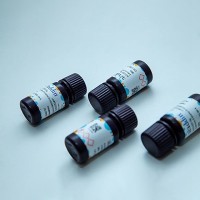Intercellular small molecular weight signaling molecules modulate a variety of biological functions in bacteria. One of the more complex behaviors mediated by intercellular signaling molecules is the suite of activities regulated by quorum sensing molecules. These molecules mediate a variety of population-dependent responses, including the expression of genes that regulate bioluminescence, type III secretion, siderophore production, colony morphology, biofilm formation, and metalloprotease production. Given their central role in regulating these responses, the detection and quantification of QS molecules has important practical implications. Until recently, the detection of QS molecules from Gram-negative bacteria has relied primarily on bacterial reporter systems. These bioassays though immensely useful are subject to interference by compounds that affect bacterial growth and metabolism. In addition, the reporter response is highly dependent on culture age and cell population density. To overcome such limitations, we developed an in vitro protein-based assay system for the rapid detection and quantification of the furanosyl borate diester (BAI-2) subclass of autoinducer-2 (AI-2) QS molecules. The biosensor is based on the interaction of BAI-2 with the Vibrio harveyi QS receptor LuxP. Conformation changes associated with BAI-2 binding to the LuxP receptor change the orientation of cyan and yellow variants of GFP (CFP and YFP) fused the N- and C-termini, respectively, of the LuxP receptor. LuxP-BAI2 binding induces changes in fluorescence resonance energy transfer (FRET) between CFP and YFP, whose magnitude of change is ligand concentration dependent. A set of ligand-insensitive LuxP-mutant FRET protein sensor was also developed for use as control biosensors. The FRET-based BAI-2 biosensor responds selectively to both synthetic and biologically derived BAI-2compounds. This report describes the use of the LuxP-FRET biosensor for the detection and quantification of BAI-2.






